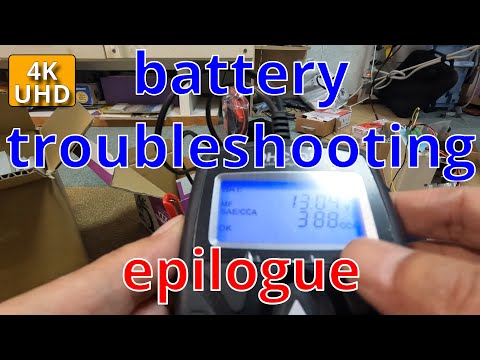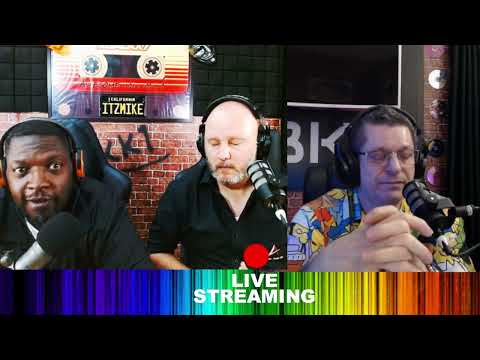Epilogue. If you have battery trouble while touring! Resolved Honda NT1100 trouble.

Hello everyone. Well, I received a lot of support from the viewers. Also my friend Tommy from Slovakia. Thank you so much. Tommy helped me.
Also, the factory manager at Honda Dream Kochi gave me a lot of advice, which was very helpful. As a result, I decided to replace the battery with a new one. As I'm sure you've all noticed, the reason why I'm so particular about this is partly because of my profession. There were a lot of things I wasn't satisfied with, so I had a lot of things to think about, including those around here.
My professional specialty is electronic circuit design. I also do microcomputer programming. Because of this relationship, although batteries themselves are outside my area of expertise, I actually have some electrical knowledge, and I found this case very difficult to understand, so I decided to pursue it a bit. One is why after running for an hour with the engine running, I took a video, stopped for about an hour, and then the battery was dead and it didn't start.
result in a big problem. Well, the conclusion is that once you run with an over-discharged battery, you can't recharge it. What I can think of from that is that the battery is an industrial product.
There are various things to think about, such as the initial failure of the battery, or the alternator, the alternator of the motorcycle, the failure of the generator part. Also, the NT1100 is a 550cc big twin, so the cranking is very heavy. In other words, when turning the starter motor, the starter motor will not turn unless a tremendously large current is applied at once. The apparent voltage and capacity of such a battery certainly increases when it is charged, but the most important thing in practice is the impedance inside the battery, which is called impedance in our industry. It's an internal resistance. If this becomes large, this internal resistance will get in the way when outputting a large current to the starter motor . , the current does not reach the starter motor.
So even if there is capacity, if it can't flow instantaneous power, it's useless. That's why there are battery testers that measure Cold Cranking Ampere (CCA). If you measure with this, no matter how much you charge it with a charger and the apparent voltage and capacity return to some extent, the reason why all of them are NG is because there is no CCA. We call it CCA.
I bought an OPTIMATE6 charger this time, but I doubted that it would work properly because it didn't charge well. I also checked the charging waveform in the previous video to see if it was working properly. I'm not a battery engineer, so I don't know how it actually works, but I got the impression that it works. After that, I measured the leak current with the motorcycle key turned off.
Also, if you add various parts afterward, the device itself may leak. Then you'll be eating electricity all the time. That's what happened, so I connected the tester and measured the leak current.
After that, I talked about various things with the factory manager of Honda Dream Kochi, and I can test the charging system alternator myself, but it 's a three-phase AC, but Honda Dream will check everything there. I will. As a result, there was no abnormality in the alternator system and the charging system. I have a story to say. As a result of investigating everything, I came to the conclusion that the battery itself was already over-discharged, and no matter how much it was charged, the actual internal impedance increased, and a large current could not be obtained. I have capacity. It has capacity, but the internal resistance increases.
So, I think it's going to be another problem if you say that impulse charge and sulfation removal will cure this. Well, it's structured like this. The so-called alternator, yes, this is written as a generator. This is the alternator. Three-phase alternating current alternator. What you see here is a regulator labeled as a rectifier. Rectifies AC power to DC voltage. This itself comes out in exchange.
According to Honda Dream, this is about 300V. As a regulation here, the voltage is regulated to about 14 to 15 volts to charge batteries and enter equipment. When changing to a lithium battery, it is necessary to change the regulator.
I have had Honda Dream take a look around here and there is no problem. Well, there is such a thing, so I decided to change the battery to a new one this time. There are various types of batteries. First of all, I didn't know what kind of battery the European spec NT1100 had, so I asked my friend Tommy in Slovakia to send me a photo of the battery.
This is Tommy's YouTube. Address: Put the link address in the @Tommyslav1st summary column. I wanted to know what's in the European spec NT11100 battery. The result was the same battery as Japan.
Thank you Tommy. After that, I heard that the Africa Twin has a lithium-ion battery, so I thought I'd give it some thought, but Honda's genuine lithium battery costs over 50,000 yen even if you look it up on Amazon. Genuine product. Also, probably, I don't know for sure, but generally one cell of lithium is 1.2 volts. These batteries are 2 volts, roughly. In general, the charging voltage should be slightly higher for lithium. After over-discharging, it will not fully recover.
Due to the characteristics of lithium, it explodes when overcharged. This has come out in various places even on mobile phones. Is it iron phosphate now? Currently, there are a lot of different battery products on the market, so even if you don't rush to buy lithium, it will become cheaper sooner or later. The time will come when lithium batteries, which do not have the danger of explosion, will become commercially available. I decided to replace the standard battery this time.
Exactly the same battery. If you buy it from Honda, it's expensive, so I buy it from Amazon. One year has not passed since I purchased the NT1100.
Changing to standard products is the least risky. After that, I plan to charge it with OPTIMATE and see how it is used in a way that avoids overdischarge. This is a newly purchased battery. Immediately measure CCA with a battery tester. Set to CCA:230. Start test.
Voltage: 13.03V, CCA: 388. OK. Internal resistance is 8mΩ. Previously, this value did not improve no matter how much I charged.
It's a relief (laughs) Just in case, it's a new battery, but I'll charge it. It went into maintenance mode within 10 minutes. nice one. Since it is an industrial product, initial defects will inevitably occur.
Check Honda's manufacturer's warranty. 3 year warranty on engine parts. Honda's homepage. However, consumables, battery fluid, and the battery itself are not covered by the warranty.
Not covered by warranty. If you buy a new car, Honda Dream, the battery will be half a year or 5000km, whichever is less. As for YUASA, it is 12 months or 20,000 km. The same is true for Honda. This YUASA regulation applies even if the battery is replaced by Honda. This information has been confirmed with Honda Dream Kochi.
Industrial products inevitably have initial defects, so not all products behave in the same way. I put together a list of batteries, and this is the battery I used for this experiment. Next is the battery of the CRF250Rally. It is NT1100. Africa Twin contains lithium phosphate. However, I can't say anything about this lithium because the notation may be different.
When replacing this time, I thought about whether to use lithium, increase the capacity, or use a standard product. When I checked the lithium in the Africa Twin on Amazon, it was 52,000 yen, which is expensive. However, I think that the danger of ignition is very small because it is lithium phosphate. This is the standard battery for the NT1100. When I asked YUASA directly, it seems that the list price has not been decided because it is an open price. The selling price is left up to each store.
Talk about the dangers of lithium. There is no risk of ignition with this iron phosphate system. Cobalt is the one that often ignites. In such batteries, a circuit board is inserted into the battery to control overdischarge, overcharge, and equal charging of each cell .
And if the electronic circuit on that board breaks, it will burn. Well, anything is possible. Iron phosphate basically has no flammable elements. However, this time it was not widely used and it was expensive, so I chose a genuine product. Also, what is sulfation? I'm looking at the WEBIKE homepage now. Sulfation is garbage.
The adhesion of dust to the electrodes deteriorates the conduction between the electrodes. The contact area between the electrode plate and the electrolyte decreases, slowing down the charging and discharging speed. However, I think that this case is different from sulfation. I just don't understand. In any case, NG comes out when measured with a battery tester.
Paste this URL in the summary column. OPTIMATE6. It's the one I used this time. It didn't go as well as I expected (laughs). Well, that's about it. This is the end of the NT1100 battery trouble video.
From the next time, I will aim to make fun, calm and beautiful videos. Thank you for watching.
2023-02-26 00:05


